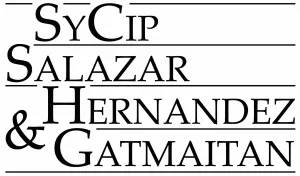- What are the new procedures for availing of tax treaty benefits?
The Bureau of Internal Revenue (BIR) issued Revenue Memorandum Order (RMO) No. 14-2021, as amended by Revenue Memorandum Circular (RMC) No. 077-21, which revised and streamlined the procedures and documents for the availment of tax treaty benefits for all types of Philippinesourced income that are subject to preferential tax treatment under a tax treaty, including dividend, interest, and royalty income which were previously covered by the Certificate of Residence for Treaty Relief (CORTT) Form prescribed under RMO No. 8-2017. RMO No. 14-2021 amends other regulations relating to applications for tax treaty benefits, including RMO Nos. 30-2002, 72-2010, and 8-2017.
RMO No. 14-2021 now allows the withholding agent (WA) to apply the preferential rate upon the submission by the non-resident income recipient (NRIR) of certain documents to the WA, but subject to the WA filing a Request for Confirmation (RFC) with the BIR's International Tax Affairs Division (ITAD) and obtaining a Certificate of Entitlement to Treaty Benefit (COE). If the WA does not apply the preferential rate under the relevant tax treaty but instead applies the regular rates under the National Internal Revenue Code, as amended (Tax Code), the NRIR, through its authorized representative, may still apply for a Tax Treaty Relief Application (TTRA) and a claim for refund with the ITAD.
RMO No. 14-2021 sets out the following process:
- Prior to receiving income from the WA in the Philippines, the NRIR shall provide the WA the following, which the latter may rely on to determine the appropriate withholding tax rate: (i) BIR Form No. 0901 or Application Form for Treaty Purposes; (ii) Tax Residency Certificate issued by the foreign tax authority; and (iii) the relevant provision of the applicable tax treaty on whether to apply a reduced rate of, or exemption from, withholding at source on the income derived by a nonresident taxpayer from all sources within the Philippines.
- The WA then remits income to the NRIR, in the form of dividends, royalty, interest, etc., and withholds tax at either the treaty rate or the regular rate.
- If the WA applied the treaty rate on the income, the WA must file with the ITAD an RFC. For capital gains, the WA may file the RFC at any time after the earlier of the payment of the income or the consummation of the transaction up to the last day of the fourth month following the close of the taxable year. For other types of income, the WA may file the RFC after the close of the taxable year up to the last day of the fourth month following the close of the taxable year. To illustrate, if an NRIR had both capital gains and dividend income on May 1, 2021, the RFC for capital gains may be filed any time after May 1, 2021 until April 30, 2022, whereas the RFC for dividends may be filed only from January 1, 2022 to April 30, 2022.
- If the BIR determines that the rate applied was correct or higher, the BIR will issue a COE confirming the NRIR's entitlement to the benefit. If the BIR determines that the rate applied was lower or the NRIR is not entitled to treaty benefits, the BIR will issue a BIR ruling denying the request and the WA must pay the deficiency taxes plus penalties.
- If, on the other hand, the WA applied the regular rate on the income, the NRIR must file with the ITAD a TTRA within the same period stated in (c) above in order to obtain a tax refund of the excess taxes withheld
Please click here to continue reading this article.
The content of this article is intended to provide a general guide to the subject matter. Specialist advice should be sought about your specific circumstances.

